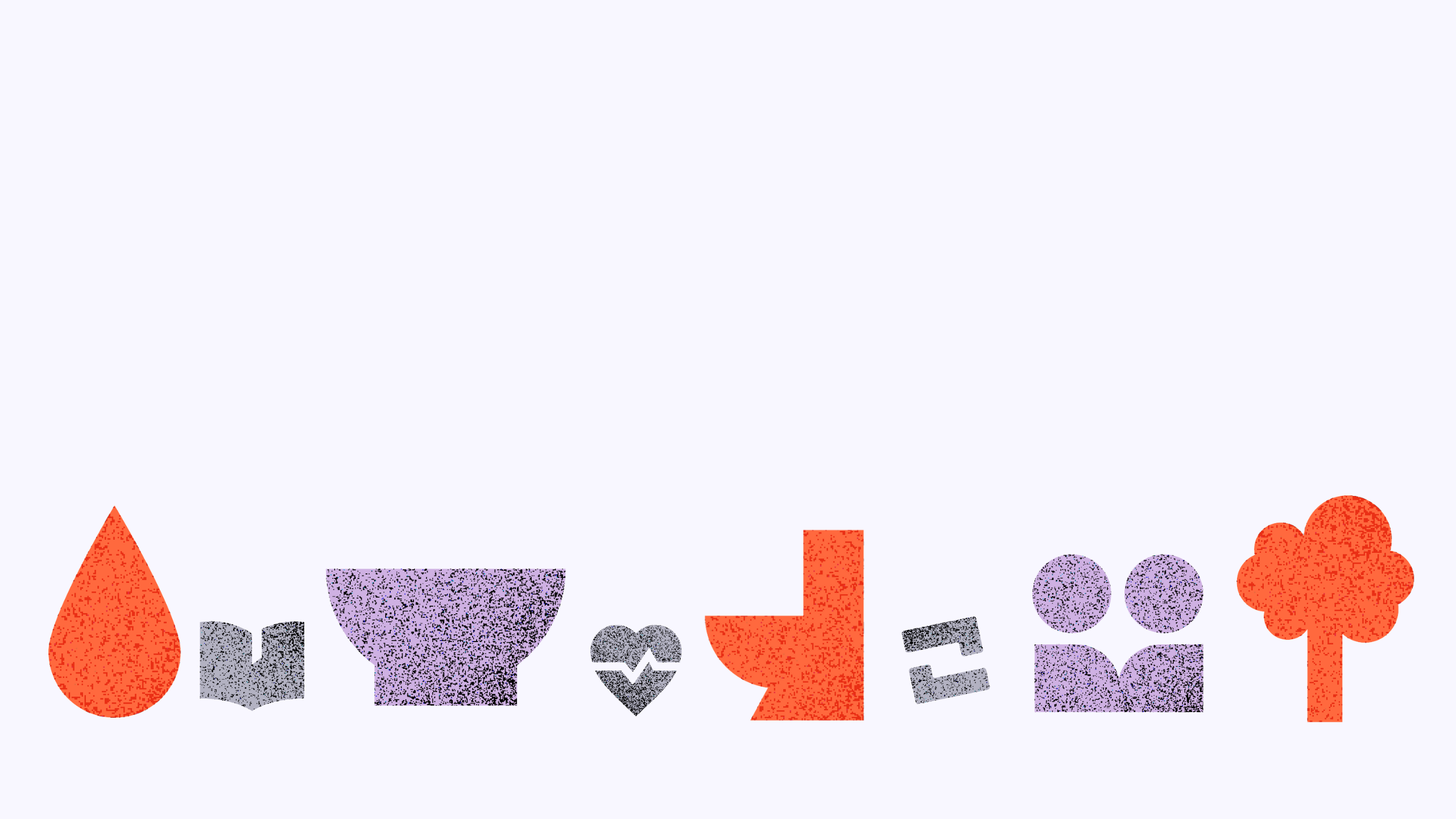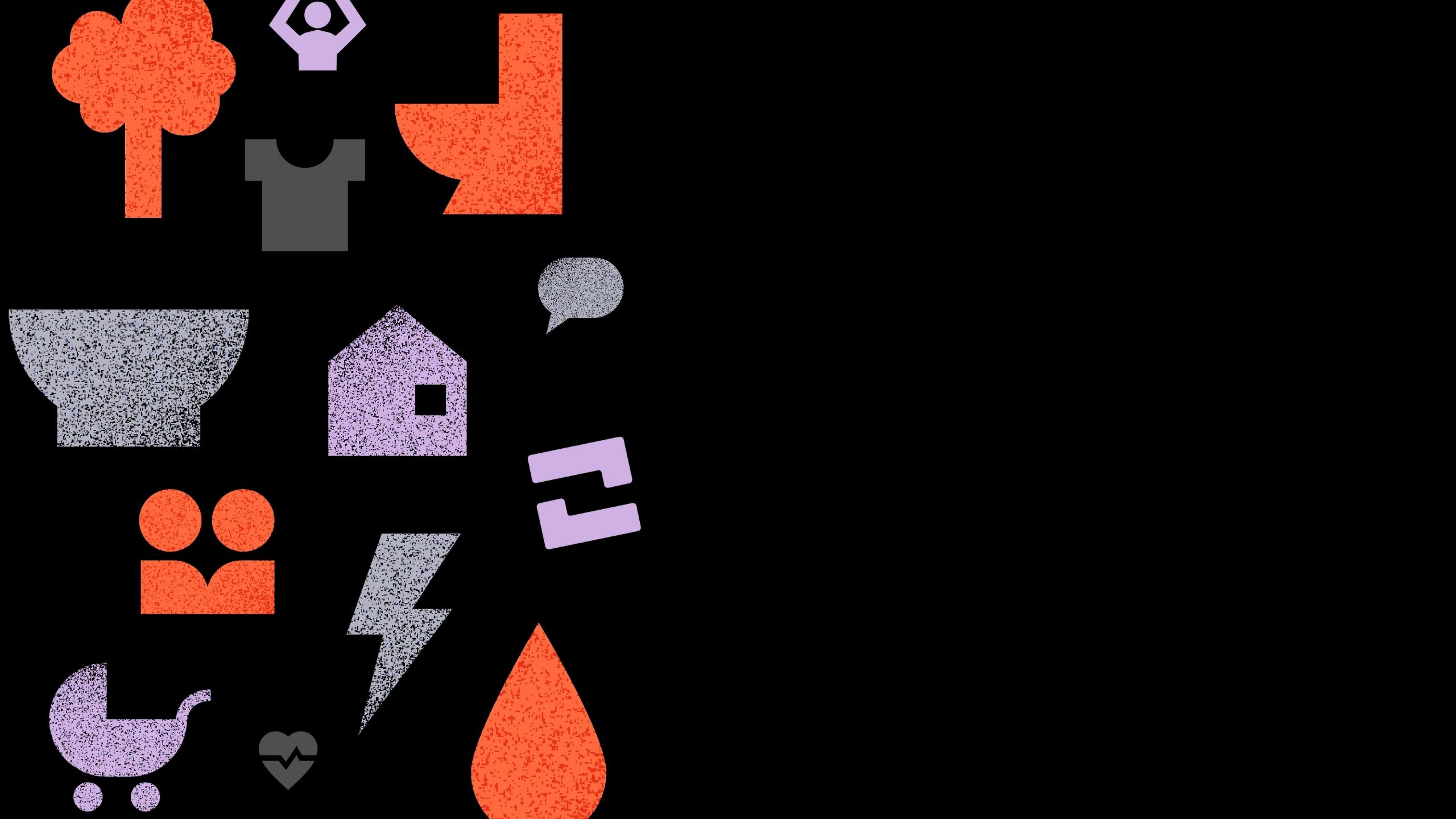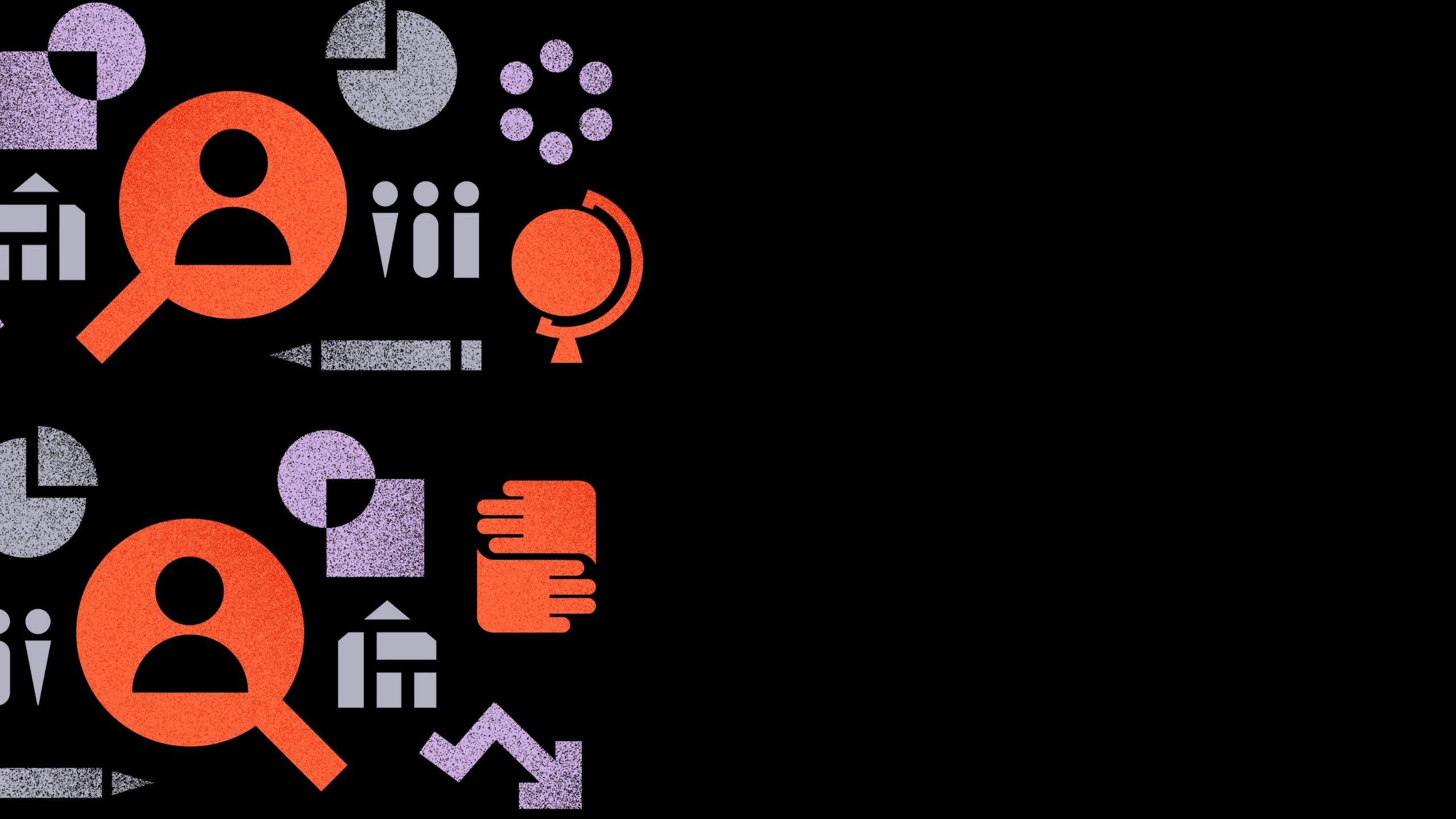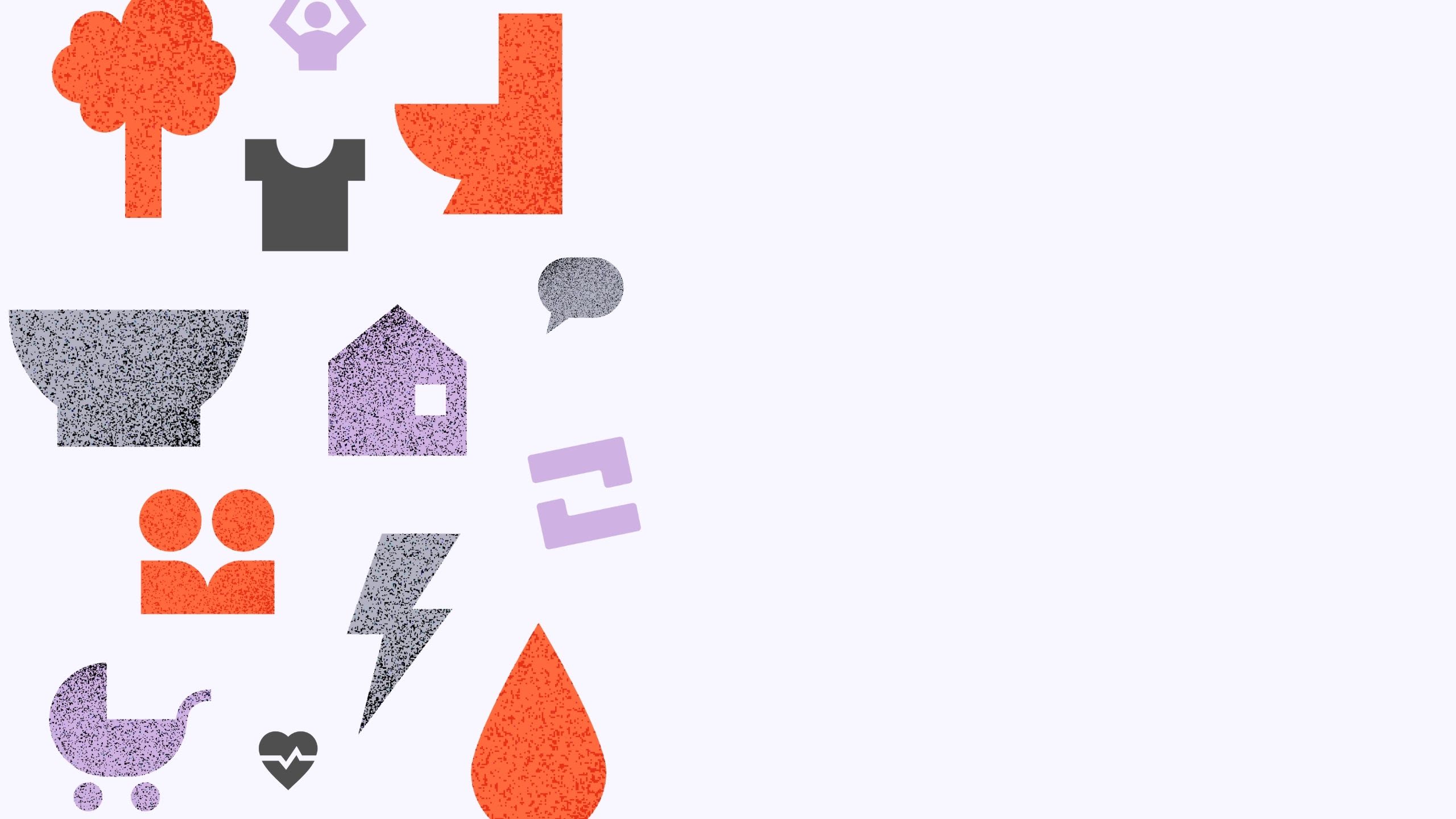What is multidimensional poverty?
A holistic approach to measuring poverty

Often, poverty is understood to be a lack of money. But people who experience poverty define it differently. Instead, they point to a range of factors that influence their circumstances such as access to education, healthcare, water and sanitation or paid work.
These dimensions of poverty can intersect and overlap to deepen experiences of poverty and inequality – for example, someone may live rurally and have limited access to healthcare which leads to poorer health outcomes. A lack of electricity may force someone to rely on unclean fuel for cooking and heating, which also has health implications. How people spend their time will be shaped by whether they have caring responsibilities, for example, which reduces the amount of time they can spend doing paid work, education or leisure activities.
What is multidimensional poverty?
Multidimensional poverty is a way of understanding the many facets of poverty, and the ways they intersect and overlap. It encompasses the challenges, barriers, issues and adversities that people who experience poverty face in their daily lives including lack of access to healthcare, education, food, water, energy, family planning, as well as exposure to violence and threats to safety, and environmental hazards, among others.
Applying a narrow definition of poverty and focusing on one dimension alone, such as income, fails to capture the true reality of people’s circumstances. In contrast, multidimensional poverty measurement offers a more holistic approach which better reflects peoples lived experiences.


Why use a multidimensional approach?
The way poverty is defined and measured influences the data that is produced, and these insights form the evidence from which decisions to reduce and eradicate poverty are made. It is essential that policy-makers, governments, and advocates who are working to reduce poverty and inequality have access to timely and quality data about multidimensional poverty to have the greatest impact. Some of the benefits of multidimensional poverty measurement include:
1. Multidimensional measures reveal more
Poverty measures that only consider income underestimate global poverty. The World Bank Poverty and Shared Prosperity 2020 report shows that over a third of those experiencing multidimensional poverty are not captured by the monetary headcount ratio. In other words, money cannot be used as the sole indicator to determine whether someone is or isn’t experiencing poverty. Together monetary and non-monetary measurement provide a comprehensive picture, and are needed to better inform the policies, programs, and services designed to reduce and ultimately eradicate poverty.
2. People who experience poverty describe the multidimensional nature of their circumstances
Equality Insights surveys are underpinned by participatory research with 3,000 people with lived experience of poverty across 6 countries. In this research, people who experience poverty named a much wider range of factors beyond money that impact their circumstances. This includes a lack of access to education, healthcare, sanitation or work, for example, and also non-material aspects of poverty including relationships, voice (how much control we have over decisions that affect our lives) and time-use (how you spend your time, and what portion is taken up doing unpaid care or domestic work for example).
3. Multidimensional poverty measurement reveals important insights that are required to inform policy and decision-making
Multidimensional poverty measurement reveals policy-relevant insights. The data it produces are able to pinpoint the areas of people’s lives that are most impacted. Ideally, when combined with intersectional analysis, this can show who specifically is experiencing poverty, and in which areas of life.


Equality Insights Measures 15 Dimensions
The two Equality Insights surveys measure poverty by collecting information about 15 key dimensions of life that people with lived experience of poverty say matter, as well as assessing assets as a proxy indicator for income. They are a gender-sensitive measure of multidimensional poverty, and survey all adults in a household.
These surveys also collect data about demographics to enable intersectional analysis (e.g. gender, age, disability status, and urban/rural location) to understand how these factors shape or deepen experiences of poverty and inequality.
The information collected helps leaders and policy-makers understand how poverty affects people depending on who they are and where they live.
Let's take a closer look...
Food
Food security is fundamental to living a life free of poverty, and it is a basic human right. Access to food has flow on effects for other areas of life including health and wellbeing.
Our research in Solomon Islands showed that food insecurity can be influenced by someone’s age or gender.
Equality Insights surveys measure food access to determine whether someone is experiencing food insecurity using the Food Insecurity Experience Scale (FIES).
Water
Everyone is entitled to sufficient, affordable, safe, and accessible water not only for drinking, but also for cooking, cleaning, bathing, and hand washing.
Water should be accessible on premises, available when needed, and free from contamination. However, people experiencing poverty tend to travel further to access water sources, which places a constraint on someone’s time and can be a potential safety concern.
As a form of unpaid work, women and girls are four times more likely to hold the responsibility of collecting water than men or boys in households requiring water collection. People with disabilities or mobility challenges may encounter increased barriers to access safe water.
Water is also important for people who menstruate, and a lack of access to safe, reliable and sufficient water sources for washing related to menstrual health and hygiene can exacerbate stigma and social constraints.
Shelter
Having adequate shelter and a safe home is a human right. While shelter may be a shared resource, in that it is shared with other people who live in the same household, control over this resource is not always shared across household members.
When measuring multidimensional poverty, it is important to consider how shelter differs among individuals even when living in the same home. For example, individual considerations can include whether someone had enough bedding, whether they are fearful of eviction, as well as the adequacy and privacy of the living space.
Limited housing options can also exacerbate violent situations, and forced evictions have a disproportionate impact on women. Home ownership is another component of shelter that is gendered.
Health
In 1948 the World Health Organisation (WHO) declared that the “enjoyment of the highest attainable standard of health is one of the fundamental rights of every human being”. However, people living in poverty continue to experience worse health outcomes, whilst having limited access to health care and social protections.
Health is also an important economic asset and can affect someone’s ability to work and generate an income, especially for people who experience poverty and whose livelihoods may depend on it.
Uneven distributions of power and resources at global, national and local levels result in structural health disadvantages, and shape access to, and availability of, healthcare and medical resources. The COVID-19 pandemic has underscored the links between poverty, inequality, and poor health, and highlighted significant disparities in the ability of countries to respond to and recover from the COVID-19 crisis.
As a measure of multidimensional poverty, Equality Insights surveys measures both physical and mental health.
Education
Quality education is key to escaping poverty, however, poverty is a major barrier to education. Over the past decade, significant progress has been made towards increasing access to education for the world’s children, yet almost 260 million children were still out of school in 2018.
The participatory research phases underpinning the development of Equality Insights surveys revealed that a lack of quality education, for an adult or their child, to be one of the most commonly mentioned dimensions of poverty, and an area where gender differences in education access and achievements shaped other life options.
Historically, and persistently, large gender gaps exist in educational access, learning achievement, and continuation in education, most often at the expense of girls, resulting in current estimates indicating that women account for two-thirds of 750 million adults without basic literacy skills.
Energy
Energy is essential for cooking, lighting, heating and cooling. Unaffordable and unclean energy can have adverse consequences for people (e.g.health concerns), and for communities (e.g. climate change and pollution).
Affordable, accessible, and sufficient energy is critical to maintaining wellbeing, but despite this, millions of households across the globe do not have their minimum energy needs met.
A lack of energy has implications for other areas of life. For example, poorer household are likely to use unclean energy sources such as biomass (e.g. wood, agricultural crops, or animal manure) which produces harmful fumes when burned. Women and girls are often responsible for collecting biomass, as well as cooking with it, and this potentially exposes them to increased harms.
Sanitation
Access to sanitation – a toilet or latrine, soap, and washing facilities – is a basic human right that protects people from diseases, provides dignity, and improves access to education and work opportunities.
Sanitation also highlights the gendered nature of poverty as access to safe sanitation facilities is critical during menstruation, along with access to sufficient and appropriate menstrual products. The lack of access to sanitation facilities or menstrual products can result in shame and hygiene concerns, potentially preventing people who menstruate from going to school, work, or participating in community activities, which can deepen experiences of poverty and inequality.
These challenges become more pronounced when considering disability and age. However, when appropriate data is available, this has been shown to inform action to improve sanitation gaps and reduce inequality.
Relationships
The importance of having a strong support network, interpersonal relationships and being socially connected is widely recognised.
In the context of measuring multidimensional poverty, someone with access to relationships of support, to draw on routinely and in emergencies, is critical to moving out of poverty. A lack of social engagement can result in a withdrawal from society or exclusion by others.
Clothing
Adequate clothing is another right we are all entitled to, yet often, it receives little attention and is not explicitly included in many multi-topic poverty surveys. However, people who experience poverty indicate that clothing is an issue with significant importance that influences their circumstances.
Clothing also has a protective factor, preventing injury and providing protection from the elements. For example, a lack of adequate footwear can lead to injury and a lack of protective clothing can lead to unhealthy sun, wind, or cold exposure.
But beyond providing basic protection, our clothing regularly determines how we are positioned in society. An inability to dress in a socially acceptable manner can result in stigma and shame, and have adverse consequences for employment and educational attainment.
These social expectations of appearance are highly gendered, conditioned early in life, and often more nuanced for women and girls, and LGBTQIA+ people.
These factors combined mean that clothing is an essential focus of multidimensional poverty measurement.
Safety
Everyone has the right to live safely and free from violence both inside their home, and within the wider community.
The research that underpins Equality Insights highlighted the imperative to collect data about safety. Exposure to violence was identified as a particularly important concept for a gender-sensitive measure of multidimensional poverty, however, it is an area that is often ignored by most measures.
Equality Insights surveys focus on measuring perceptions of safety and unwanted experiences in public spaces. Threats to safety have long-term and wide-ranging consequences that impact daily life.
Family Planning
Reproductive health and rights, including family planning are crucial to achieving gender equality and women’s empowerment. While family planning is particularly important for women, it has benefits for everyone and is a critical factor in reducing poverty.
Put simply, family planning means that people are able to choose the number of children they have by using reliable methods of birth control. This means having access to information, contraception and services, to ensure people can make informed choices.
Yet, in 2020, estimates indicated that 172 million women worldwide had an unmet need for family planning.
Environment
There is a strong link between human rights and the environment. People experiencing poverty are more likely to also experience environmental harms, such as pollution or the effects of climate change.
Environmental shocks and natural disasters including cyclones and droughts, as well as general pollution can impact safety and health. Environmental shocks have also pushed people into poverty.
Inclusive development can reduce the impact of harmful environmental factors on poverty, so it is critical to understand where environmental concerns are the most pronounced, and how they affect different groups of people.
Voice
Voice refers to the ability to speak up and be heard. It also encapsulates agency, empowerment, the power to make decisions and influence decision-making, particularly about areas that affect your life at both an individual and community level.
Inclusive decision-making is fundamental to reducing and eradicating poverty, within households and families, but also within communities and societies.
Social norms can influence how a person’s opinions may be expressed, understood, and respected by others based on their gender. Inside and outside the household, patriarchal expectations can limit the scope of influence that women may have on decision making, as well as the general acceptability of women to express their perspectives.
If your voice is limited, restricted or constrained, this acts as a barrier to being able to improve your own circumstances or other dimensions of life. This makes it a critical component of understanding multidimensional poverty.
Time-Use
We all have 24 hours in a day. But how we spend that time is shaped by our gender. Time use data shows how individuals allocate their time to different activities including work (both paid and unpaid), education, leisure or other activities, and is useful for a range of policy issues to reduce inequality.
For example, time-use data provides important insights about the division of labour between people of different genders, and is essential for recognising, valuing and redistributing unpaid care and domestic work.
As a gender-sensitive measure of multidimensional poverty, Equality Insights surveys collect time-use data.
Work
A significant amount of our time is occupied by work – whether paid or unpaid – and this has implications for many areas of life – from income and livelihood, to health and wellbeing.
While traditional poverty measures often have a focus on assessing income and expenditure, this overlooks the immense contributions but also constraints associated with unpaid work – work that is unevenly divided and distributed by gender.
Data about unpaid work is significantly under-represented, and these data gaps present challenges to develop evidence-based action to value, support, and more equitably share unpaid work, and expand women’s paid work opportunities in ways that do not leave them with a significantly increased overall labour burden.
Without visibility of both forms of work and their interaction in data, gender inequalities will persist in the division of labour inside the household and in the labour market with lifelong implications for women’s financial circumstances.
Effective policy action that supports women’s economic pathways to empowerment requires understanding that divisions of labour and the relationship between paid and unpaid work are influenced by gender.

